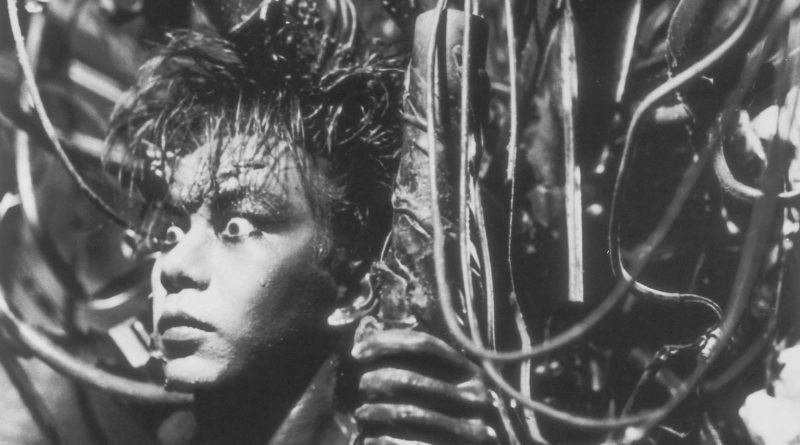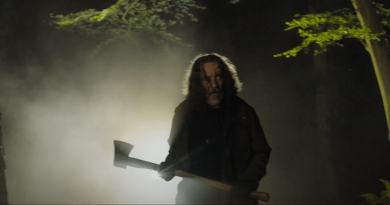‘Tetsuo I & II’ Review: Full-Metal Nightmare
Few experiences are as singular as underground filmmaking icon Shinya Tsukamoto‘s Tetsuo: The Iron Man. Shot in 16mm black and white on a shoestring budget, the film is an experimental cyberpunk movie unlike anything before it. The narrative follows a meek salaryman (Tomoworo Taguchi) who is infected by a strange metal substance that transforms him agains this will into a superpowered cyborg, as he falls victim to the machinations of the Metal Fetishist (Shinya Tsukamoto) who has the ability to control metal objects and is hellbent on destroying the world.
The film is full of bizarre and terrifying visuals, bringing to mind the body-horror works of David Lynch and David Cronenberg that inspired it. To go along with this is kinetic and innovative camerawork and editing, that bring to life the strange abilities and heightened emotions of the metal men at the center of the story. While the narrative is fairly simple, it is told in an abstract, visceral, high-impact way due to the creative use of cinematic techniques and wild practical special effects. The use of stop-motion to simulate effects like superspeed and cybernetic transformation is definitely a highlight. The acting is all intentionally heightened, giving one the feeling of watching a cartoon, made all the more disturbing by the fact that it is not. Watching Tetsuo is like riding a rocket to hell. It’s fast-paced, dark, violent, and completely insane, oozing cinematic style over its relatively brief 62 minute runtime.
Tetsuo is a hard act to follow, but 1992’s Tetsuo II: Body Hammer is a worthy successor. Part sequel and part remake, the film is more of an expansion or an extended riff on the ideas of the first film. Taguchi and Tsukamoto return as new iterations of the mild mannered protagonist and cyborg-prophet of the apocalypse respectively. This time Taguchi’s protagonist is transformed into a human weapon, whose abilities are fueled by rage and the desire to kill, when he becomes the target of a machine worshipping cult. With the sequels increased budget, Tsukamoto was able to film in color, do more with his special effects, and boost the runtime to almost 90 minutes. The film gains a great deal of visual splendor while still retaining some of the grungy charm of the original. In addition, the story gets more complex, with a larger cast and more development of its two leads. The themes and ideas driving the film are also made more overt, with more of the ideas present in the film developed through story as opposed to imagery alone. Tetsuo II, while longer and less innovative, is still very much the wild thrill-ride that the first one is.
Both films are fascinating tales of rage, violence, transformation, and destruction. They discuss the capacity for violence and destruction the lies within even the most unassuming individuals as well as within modern society at large. Just as the protagonist is transformed from a meek coward into an engine of death, the cyborg villains wish to remake the world into a scrapyard, much in the same way Tsukamoto’s native Tokyo was transformed into a high-tech industrialized city at the expense of the natural beauty surrounding it. The cyborg villain is always portrayed as a fanatic, someone who worships machinery and strength, always admiring images of athletes and bodybuilders, holding on to the belief that rage is the purest emotion and that the apocalypse is a worthy end in itself. The ideas work on an almost subliminal level, in the way all great films do.
Tetsuo I and II are a must watch for fans of horror, science fiction, action, or cinema in general. They are both ferocious pieces of filmmaking and completely unlike anything else out there, even as their influence permeates the broader culture. The impact of Tetsuo can be seen in films like The Matrix, Pi, Requiem for a Dream, Fight Club, and many others, but it is an impact that is best understood when it is felt by watching the genuine article.




